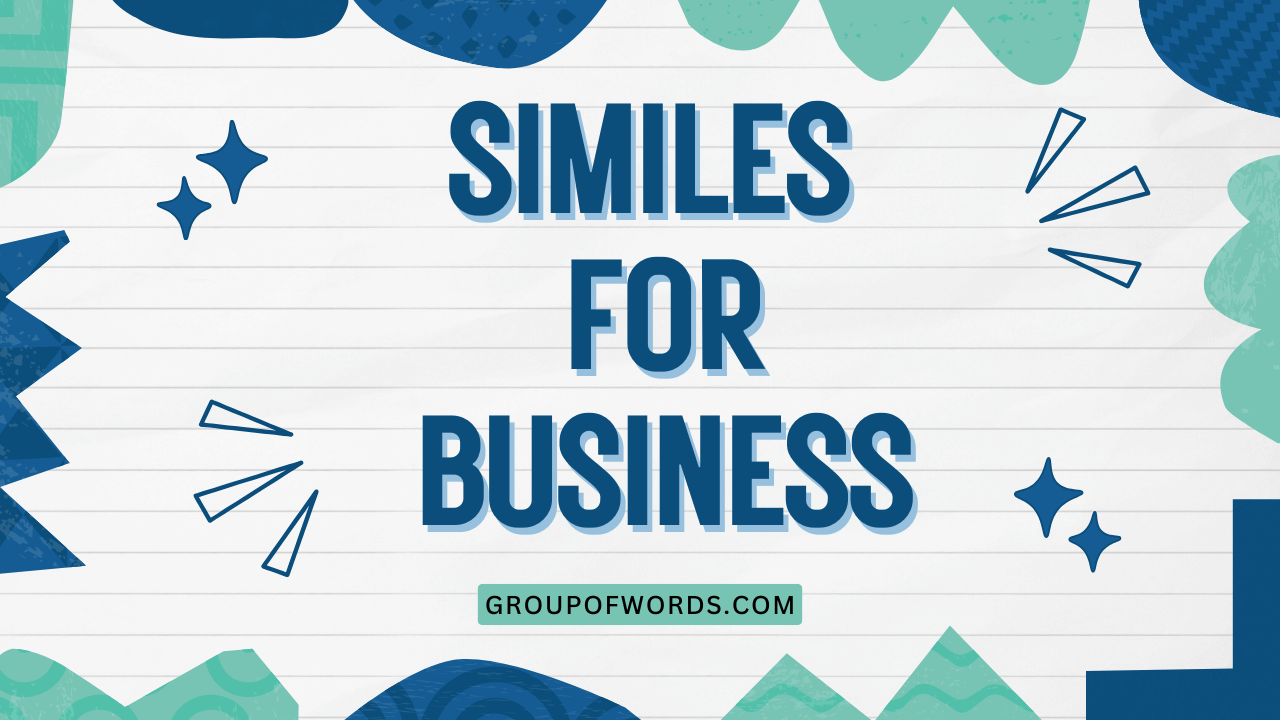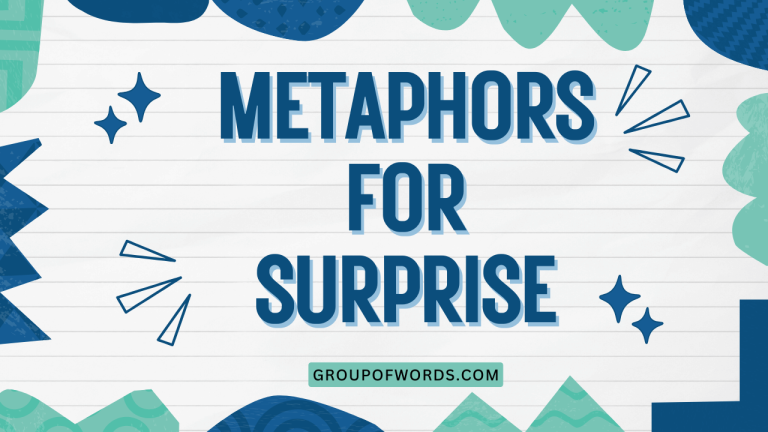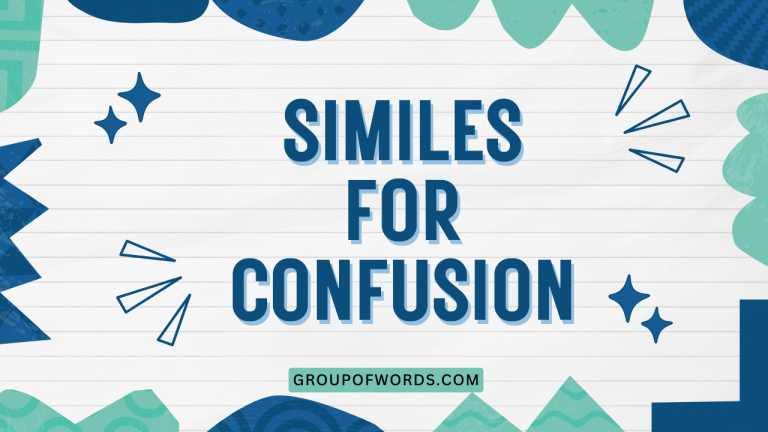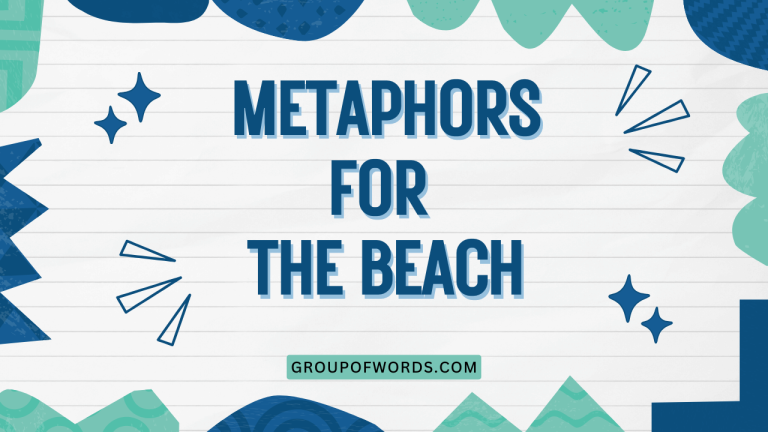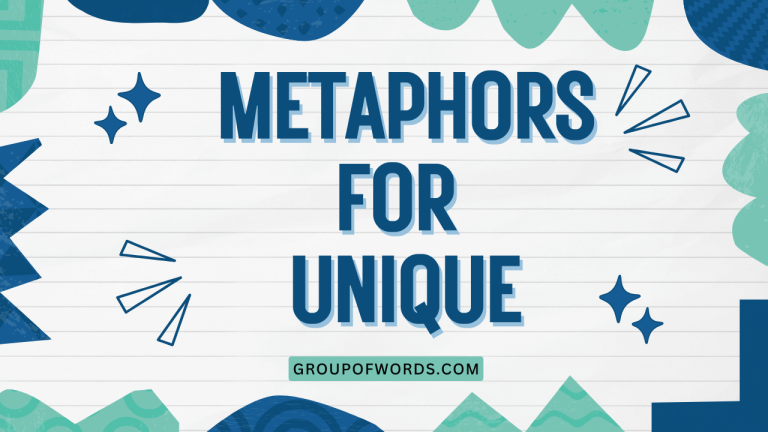Similes for Business: Sharpening Communication Skills
In the world of business, effective communication is paramount. Whether you’re presenting a new strategy, negotiating a deal, or motivating a team, using vivid and engaging language can make all the difference.
Similes, with their ability to draw comparisons and create memorable images, are powerful tools for enhancing clarity and impact. This article delves into the art of using similes in a business context, providing you with the knowledge and practice to elevate your communication skills.
This guide is designed for business professionals, students, and anyone looking to improve their communication skills. By understanding the structure and application of similes, you can inject creativity, clarity, and persuasiveness into your business writing and speaking.
Let’s explore how similes can transform your professional interactions.
Table of Contents
- Introduction
- Definition of Simile
- Structural Breakdown of Similes
- Types of Similes
- Similes in Business: Examples
- Usage Rules for Similes
- Common Mistakes with Similes
- Practice Exercises
- Advanced Topics: Beyond Basic Similes
- Frequently Asked Questions
- Conclusion
Definition of Simile
A simile is a figure of speech that compares two unlike things using the words “like” or “as.” Its primary function is to enhance understanding and create a vivid image in the reader’s or listener’s mind. Similes are used to make abstract concepts more concrete, complex ideas more accessible, and general descriptions more engaging.
In business communication, similes can be particularly effective for illustrating complex strategies, describing leadership styles, or highlighting the impact of marketing campaigns. By drawing comparisons to familiar concepts, you can make your message clearer, more persuasive, and more memorable.
The key to a good simile is the unexpected yet relevant comparison. The two things being compared should be distinct, but the comparison should illuminate a shared quality or characteristic.
For example, saying “Our marketing budget is as tight as a drum” is more impactful than simply saying “Our marketing budget is limited.”
Structural Breakdown of Similes
The basic structure of a simile includes three key components:
- The Subject: This is the thing being described or compared. In business, this could be a strategy, a project, a team, or any other element of the business environment.
- The Comparison Word: This is either “like” or “as.” These words explicitly signal that a comparison is being made.
- The Object of Comparison: This is the thing to which the subject is being compared. It should be something familiar or easily understood, so the comparison helps clarify the subject.
The formula is: Subject + Comparison Word (like/as) + Object of Comparison
Let’s break down an example: “Our sales team is as hungry as wolves.”
- Subject: Our sales team
- Comparison Word: as
- Object of Comparison: Wolves
This simile suggests that the sales team is highly motivated and eager to close deals, just like wolves are driven to hunt. The comparison creates a more vivid and memorable image than simply saying “Our sales team is very motivated.”
Types of Similes
While all similes use “like” or “as” to make a comparison, they can be categorized based on the type of comparison they make.
Descriptive Similes
These similes focus on describing a quality or characteristic of the subject. They help paint a clearer picture for the audience.
Explanatory Similes
These similes aim to explain a complex or abstract concept by comparing it to something more familiar.
Emphatic Similes
These similes are used to emphasize a particular point or feeling. They add force and intensity to the message.
Similes in Business: Examples
Here are some examples of similes used in various business contexts, categorized for clarity.
Similes for Describing Strategy
A well-crafted simile can make a complex strategic plan more understandable and relatable. The following table illustrates how similes can be used to describe different aspects of business strategy.
| Simile | Explanation |
|---|---|
| Our market entry strategy is like a slow and steady climb up a mountain. | Illustrates a gradual, persistent approach to entering a new market. |
| The new product launch will be as smooth as silk. | Suggests a seamless and effortless introduction of the product. |
| Our risk management plan is like a safety net. | Emphasizes the protective nature of the plan. |
| The company’s restructuring is like a phoenix rising from the ashes. | Implies a complete transformation and renewal after a period of difficulty. |
| Our competitive advantage is like a fortress. | Highlights the strength and resilience of the company’s unique selling points. |
| The project timeline is as tight as a drum. | Indicates a very strict and inflexible schedule. |
| Our diversification strategy is like spreading your bets. | Illustrates the concept of reducing risk by investing in multiple areas. |
| The acquisition process was as tangled as a ball of yarn. | Describes the complexity and confusion of the acquisition. |
| Our innovation pipeline is like a well-oiled machine. | Suggests a smooth and efficient process for generating new ideas. |
| The supply chain is as fragile as glass. | Highlights the vulnerability and potential for disruption in the supply chain. |
| Our strategic goals are like stars guiding us. | Emphasizes the guiding and aspirational nature of the goals. |
| The implementation of the new system was as easy as pie. | Indicates a simple and straightforward implementation process. |
| Our contingency plan is like a lifeboat on a ship. | Highlights the importance of having a backup plan in case of emergencies. |
| The marketing campaign rollout was as explosive as fireworks. | Suggests a sudden and impactful launch of the marketing campaign. |
| Our long-term vision is like a compass directing our path. | Illustrates the guiding influence of the company’s long-term goals. |
| The process improvement initiative is like pruning a tree. | Emphasizes the need to remove inefficiencies and improve overall performance. |
| The negotiations were as intense as a chess match. | Describes the strategic and competitive nature of the negotiations. |
| Our growth projections are like seeds planted in fertile ground. | Suggests a high potential for growth and prosperity. |
| The new policy is as clear as day. | Indicates that the policy is easy to understand and unambiguous. |
| Our market research is like a detective solving a case. | Highlights the investigative and analytical nature of market research. |
| The budget allocation process is as fair as possible. | Indicates that the budget allocation process is impartial and unbiased. |
| Our customer service is like a helping hand. | Emphasizes the supportive and helpful nature of the customer service team. |
| The new software integration was as smooth as butter. | Implies a seamless and effortless integration of the new software. |
Similes for Describing Leadership
Effective leadership is crucial for business success. Similes can help illustrate different leadership styles and qualities, making them more relatable and understandable to employees.
| Simile | Explanation |
|---|---|
| Our CEO is like a conductor leading an orchestra. | Illustrates the CEO’s role in coordinating and directing different departments. |
| She leads as a shepherd guides her flock. | Suggests a caring and protective leadership style. |
| His vision is like a lighthouse guiding ships. | Emphasizes the clarity and direction provided by his leadership. |
| Her decision-making is as sharp as a razor. | Highlights her ability to make quick and decisive judgments. |
| His motivational skills are like a spark igniting a fire. | Suggests his ability to inspire and energize his team. |
| She is as steady as a rock in times of crisis. | Indicates her calm and reliable presence during challenging situations. |
| His leadership style is like a coach training athletes. | Illustrates a focus on development, mentorship, and performance improvement. |
| Her communication skills are as clear as a bell. | Highlights her ability to convey information effectively and unambiguously. |
| His ability to delegate is like a general commanding troops. | Suggests a strategic and effective approach to assigning tasks and responsibilities. |
| She is as approachable as your favorite neighbor. | Indicates her friendly and accessible demeanor. |
| His problem-solving skills are like a detective piecing together clues. | Illustrates his analytical and investigative approach to resolving issues. |
| Her empathy is as deep as the ocean. | Highlights her ability to understand and connect with others’ feelings. |
| His strategic thinking is like a chess master planning moves. | Suggests a thoughtful and calculated approach to long-term planning. |
| She is as resilient as a rubber band. | Indicates her ability to bounce back from setbacks and challenges. |
| His integrity is like a compass always pointing north. | Emphasizes his unwavering commitment to ethical principles. |
| Her influence is as pervasive as the air we breathe. | Highlights her widespread impact and ability to shape the organization. |
| His mentorship is like a guiding star for young professionals. | Suggests the valuable support and direction he provides to emerging talent. |
| She is as adaptable as a chameleon. | Indicates her ability to adjust to changing circumstances and new environments. |
| His commitment to excellence is like an artist’s dedication to their craft. | Emphasizes his unwavering pursuit of quality and perfection. |
| She is as transparent as glass in her dealings. | Highlights her honesty and openness in all her interactions. |
| His diplomatic skills are like an ambassador negotiating peace. | Illustrates his ability to resolve conflicts and build consensus. |
| She is as persistent as a bulldog. | Indicates her determination and unwillingness to give up on her goals. |
Similes for Describing Sales
Similes can be used to describe the sales process, the skills of a salesperson, or the impact of a sales campaign. These comparisons can make sales strategies more relatable and engaging.
| Simile | Explanation |
|---|---|
| Our sales team is as hungry as wolves. | Highlights the team’s strong motivation and drive to close deals. |
| Closing that deal was like pulling teeth. | Describes the difficulty and effort required to finalize the sale. |
| His sales pitch was as smooth as butter. | Suggests a persuasive and effortless presentation. |
| Our sales figures are climbing like a rocket. | Emphasizes the rapid growth in sales performance. |
| The new sales strategy is like casting a wide net. | Illustrates an approach that aims to reach a large number of potential customers. |
| Our sales targets are as ambitious as climbing Mount Everest. | Indicates the challenging and demanding nature of the sales goals. |
| His networking skills are like a spider weaving a web. | Highlights his ability to connect with a wide range of people. |
| The product demo was as captivating as a magic show. | Suggests an engaging and impressive presentation of the product. |
| Our customer retention rate is like glue. | Emphasizes the strong and lasting relationships with customers. |
| The sales cycle is as long as a marathon. | Indicates the extended period required to close a deal. |
| Our sales pipeline is like a river flowing steadily. | Suggests a consistent and reliable flow of potential deals. |
| His ability to handle objections is like a shield deflecting attacks. | Highlights his skill in addressing concerns and overcoming resistance. |
| The sales incentives are as enticing as a treasure hunt. | Suggests the motivating and rewarding nature of the sales incentives. |
| Our customer feedback is like gold. | Emphasizes the valuable insights gained from customer input. |
| His closing technique is as sharp as a tack. | Highlights his skill in finalizing deals and securing commitments. |
| The sales commission structure is like a ladder rewarding effort. | Illustrates the progressive nature of the commission system. |
| Our sales training program is like a boot camp preparing soldiers. | Suggests the intense and rigorous nature of the training. |
| The sales presentation was as persuasive as a lawyer’s closing argument. | Highlights the compelling and convincing nature of the presentation. |
| Our sales forecasts are like gazing into a crystal ball. | Indicates the uncertainty and speculation involved in predicting sales performance. |
| His product knowledge is like an encyclopedia. | Emphasizes his extensive and comprehensive understanding of the product. |
| The sales team’s morale is as high as a kite. | Suggests a positive and enthusiastic team environment. |
| Our sales process is like a well-choreographed dance. | Illustrates the smooth and coordinated steps involved in selling. |
Similes for Describing Marketing
Marketing campaigns often aim to create a lasting impression. Similes can help describe the effectiveness, reach, and impact of marketing efforts.
| Simile | Explanation |
|---|---|
| Our marketing campaign spread like wildfire. | Highlights the rapid and widespread reach of the campaign. |
| The new ad is as catchy as a pop song. | Suggests the ad’s memorable and attention-grabbing quality. |
| Our brand recognition is like a household name. | Emphasizes the widespread familiarity with the brand. |
| The social media buzz was as loud as a rock concert. | Indicates the high level of engagement and discussion surrounding the campaign. |
| Our marketing strategy is like planting seeds for future growth. | Illustrates the long-term investment and potential for future returns. |
| The rebranding effort was as refreshing as a cool breeze. | Suggests a revitalizing and positive change to the brand image. |
| Our target audience is like a puzzle we need to solve. | Highlights the challenge of understanding and reaching the desired customer base. |
| The marketing budget is as tight as a drum. | Indicates a limited amount of funds available for marketing activities. |
| Our advertising campaign is like a beacon attracting customers. | Emphasizes the campaign’s ability to draw in potential buyers. |
| The customer loyalty program is as rewarding as a treasure hunt. | Suggests the enticing and valuable benefits offered to loyal customers. |
| Our brand message is like a clear and concise story. | Highlights the simplicity and effectiveness of the brand communication. |
| The marketing analytics are as insightful as a detective’s investigation. | Illustrates the valuable information gained from analyzing marketing data. |
| Our website design is like a virtual storefront. | Emphasizes the importance of the website as a customer touchpoint. |
| The viral marketing campaign spread as quickly as a rumor. | Suggests the rapid and uncontrolled dissemination of the marketing message. |
| Our content marketing strategy is like a garden nurturing leads. | Illustrates the process of cultivating and developing relationships with potential customers. |
| The email marketing campaign was as targeted as a sniper shot. | Highlights the precision and focus of the email marketing efforts. |
| Our search engine optimization (SEO) is like climbing the ranks in a competition. | Suggests the effort and strategy involved in improving search engine rankings. |
| The public relations campaign was as effective as a well-orchestrated symphony. | Illustrates the coordinated and harmonious impact of the PR efforts. |
| Our customer segmentation is like sorting items into labeled boxes. | Emphasizes the organization and categorization of customers based on shared characteristics. |
| The A/B testing process is as meticulous as a scientist’s experiment. | Highlights the careful and detailed approach to testing different marketing elements. |
| Our social media presence is like a virtual community. | Suggests the sense of connection and interaction fostered on social media platforms. |
Similes for Describing Finance
Financial concepts can be complex and abstract. Similes can simplify these concepts and make them more understandable to a wider audience.
| Simile | Explanation |
|---|---|
| Our investment portfolio is like a diversified garden. | Illustrates the concept of spreading investments across different asset classes. |
| The company’s debt is as heavy as a lead weight. | Emphasizes the burden and pressure of high debt levels. |
| Our cash flow is like the lifeblood of the company. | Highlights the critical importance of maintaining a healthy cash flow. |
| The budget is as balanced as a tightrope walker. | Suggests the careful and precise allocation of resources. |
| Our financial forecast is like looking into a crystal ball. | Indicates the uncertainty and speculation involved in predicting future financial performance. |
| The profit margin is as thin as a razor’s edge. | Emphasizes the vulnerability of the profit margin to changes in costs or revenue. |
| Our financial controls are like a security system protecting assets. | Illustrates the safeguards in place to prevent fraud and mismanagement. |
| The company’s valuation is as inflated as a balloon. | Suggests that the company’s market value is higher than its intrinsic value. |
| Our financial reporting is like a transparent window into the company’s performance. | Highlights the openness and clarity of the financial information. |
| The risk assessment process is as thorough as a medical checkup. | Illustrates the comprehensive and detailed evaluation of potential risks. |
| Our capital structure is like the foundation of a building. | Emphasizes the importance of a solid and well-designed capital structure. |
| The cost-cutting measures are as painful as surgery. | Suggests the difficult and potentially disruptive nature of cost reductions. |
| Our revenue stream is like a river flowing steadily. | Highlights the consistent and reliable source of income. |
| The audit process is as rigorous as a scientific experiment. | Illustrates the thorough and objective examination of financial records. |
| Our financial strategy is like a roadmap guiding the company’s growth. | Emphasizes the direction and planning provided by the financial strategy. |
| The debt-to-equity ratio is as balanced as a seesaw. | Suggests the ideal proportion between debt and equity financing. |
| Our investment in research and development is like planting seeds for future innovation. | Illustrates the long-term potential for growth and competitive advantage. |
| The tax planning strategy is as intricate as a spider’s web. | Highlights the complexity and interconnectedness of tax planning activities. |
| Our financial performance is like a report card reflecting our efforts. | Emphasizes the accountability and measurement of financial results. |
| The economic downturn is as challenging as navigating a storm. | Illustrates the difficult and unpredictable conditions of a recession. |
| Our budgeting process is like dividing a pie among different departments. | Suggests the allocation of resources based on priorities and needs. |
Usage Rules for Similes
To use similes effectively, keep these rules in mind:
- Ensure Clarity: The comparison should clarify, not confuse. Choose objects of comparison that are familiar to your audience.
- Be Relevant: The comparison should be relevant to the subject. The shared quality should be meaningful.
- Avoid Clichés: Overused similes (e.g., “as busy as a bee”) can sound unoriginal and lack impact. Strive for fresh and creative comparisons.
- Maintain Consistency: Ensure the simile fits the tone and style of your writing or speaking.
- Use Sparingly: Overusing similes can make your communication sound forced and unnatural. Use them strategically for maximum impact.
Common Mistakes with Similes
Here are some common mistakes to avoid when using similes:
| Incorrect | Correct | Explanation |
|---|---|---|
| Our strategy is like a strategy. | Our strategy is like a roadmap. | The comparison should be between two different things. |
| He is as tall like a tree. | He is as tall as a tree. | Use “as…as” or “like,” but not both together. |
| The project was like. | The project was like a roller coaster. | The simile must be completed with an object of comparison. |
| Our sales are as good as good. | Our sales are as good as last year. | Avoid comparing something to itself. |
Practice Exercises
Test your understanding of similes with these exercises.
Exercise 1: Identifying Similes
Identify the similes in the following sentences:
| Question | Answer |
|---|---|
| 1. The market is as volatile as the ocean during a storm. | as volatile as the ocean during a storm |
| 2. Our team works hard. | (No simile) |
| 3. The new software runs like a dream. | like a dream |
| 4. Her presentation was very informative. | (No simile) |
| 5. The negotiations were as tough as nails. | as tough as nails |
| 6. His leadership style is like a coach guiding a team. | like a coach guiding a team |
| 7. Our marketing campaign spread like wildfire. | spread like wildfire |
| 8. The financial report was difficult to understand. | (No simile) |
| 9. The company’s growth is like a rising tide. | like a rising tide |
| 10. The customer service was as helpful as a friendly neighbor. | as helpful as a friendly neighbor |
Exercise 2: Completing Similes
Complete the following similes with an appropriate object of comparison:
| Question | Answer |
|---|---|
| 1. Our sales team is as motivated as _____. | as motivated as a racehorse |
| 2. The project deadline is as close as _____. | as close as tomorrow |
| 3. The new product is like _____. | like a breath of fresh air |
| 4. His presentation skills are as sharp as _____. | as sharp as a tack |
| 5. Our marketing budget is as tight as _____. | as tight as a drum |
| 6. The company’s reputation is like _____. | like a shining star |
| 7. Our customer loyalty is as strong as _____. | as strong as steel |
| 8. The industry competition is like _____. | like a battlefield |
| 9. The company’s vision is like _____. | like a guiding star |
| 10. Our team’s collaboration is as seamless as _____. | as seamless as a symphony |
Exercise 3: Creating Similes
Create your own similes for the following business scenarios:
| Question | Answer |
|---|---|
| 1. Describe a successful negotiation. | The negotiation was like a perfectly executed dance, with each party moving in harmony towards a mutually beneficial agreement. |
| 2. Describe a challenging project. | The project was as challenging as climbing a mountain in a blizzard, requiring immense effort and perseverance to reach the summit. |
| 3. Describe a dynamic market. | The market is as dynamic as a fast-flowing river, constantly changing and requiring constant adaptation. |
| 4. Describe an effective leader. | The leader is like a lighthouse guiding ships safely to shore, providing direction and support in turbulent times. |
| 5. Describe a successful marketing campaign. | The marketing campaign spread like a captivating melody, resonating with the target audience and leaving a lasting impression. |
| 6. Describe a thriving company culture. | The company culture is like a vibrant garden, where ideas flourish and employees grow together. |
| 7. Describe a strong competitive advantage. | Our competitive advantage is like a fortress, protecting our market share and deterring competitors. |
| 8. Describe a streamlined process. | The process is as streamlined as a Formula 1 pit stop, with each step executed flawlessly and efficiently. |
| 9. Describe a valuable customer relationship. | The customer relationship is like a sturdy bridge, connecting our company with loyal customers and fostering long-term partnerships. |
| 10. Describe a clear strategic vision. | The strategic vision is like a well-defined map, guiding our company towards its goals and ensuring we stay on course. |
Advanced Topics: Beyond Basic Similes
For advanced learners, consider these more complex aspects of using similes:
- Extended Similes: Develop a simile over several sentences or paragraphs, exploring the comparison in greater detail.
- Implied Similes: Suggest a comparison without explicitly using “like” or “as.” This requires more subtlety and creativity.
- Combining Similes with Metaphors: Use similes to introduce a concept and then transition to metaphors for a deeper, more symbolic meaning.
Frequently Asked Questions
- What is the difference between a simile and a metaphor?
A simile compares two things using “like” or “as,” while a metaphor directly equates them without using these words. For example, “He is as brave as a lion” (simile) versus “He is a lion” (metaphor).
- Why are similes useful in business communication?
Similes enhance clarity, create vivid images, and make abstract concepts more relatable. They can also add persuasiveness and memorability to your message.
- How can I avoid using clichés in my similes?
Brainstorm unique and unexpected comparisons. Think about the specific qualities you want to highlight and choose objects of comparison that are less common.
- Can I use similes in formal business writing?
Yes, but use them judiciously. Ensure they fit the tone and style of the document and that they enhance clarity rather than detract from it.
- How do I know if a simile is effective?
An effective simile should resonate with your audience and create a clear and memorable image. Test your similes on others to get feedback on their impact.
- What are some other figures of speech that are similar to similes?
Metaphors, analogies, and personification are related figures of speech that can also enhance your communication. Understanding the nuances of each can help you choose the most effective tool for your message.
- How can I practice using similes in my daily communication?
Make a conscious effort to incorporate similes into your conversations and writing. Start by identifying opportunities to use comparisons and brainstorming different options. The more you practice, the more natural it will become.
Conclusion
Similes are a valuable tool for enhancing communication in the business world. By mastering the art of comparison, you can make your messages clearer, more engaging, and more memorable.
Whether you’re crafting a strategic plan, motivating a team, or presenting a sales pitch, similes can help you connect with your audience and achieve your communication goals. Embrace the power of similes and watch your business communication skills soar.
